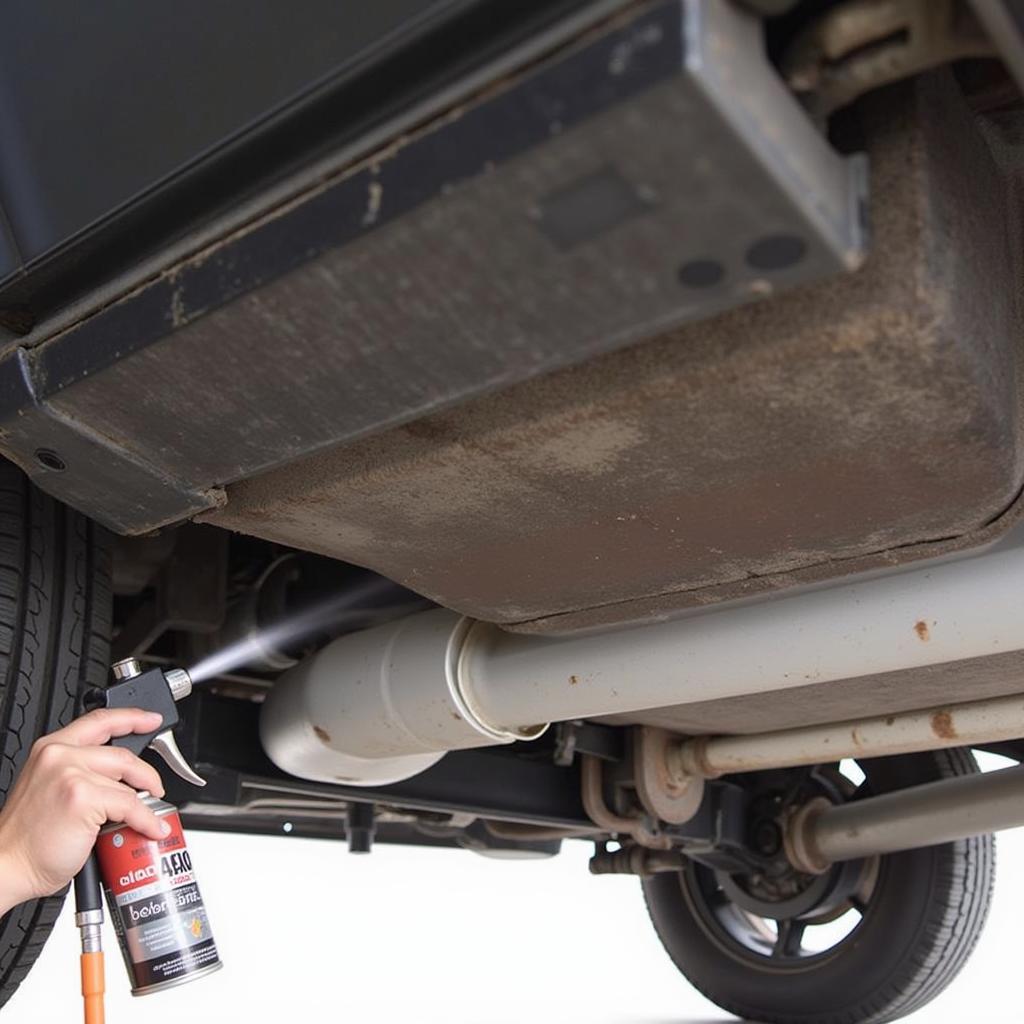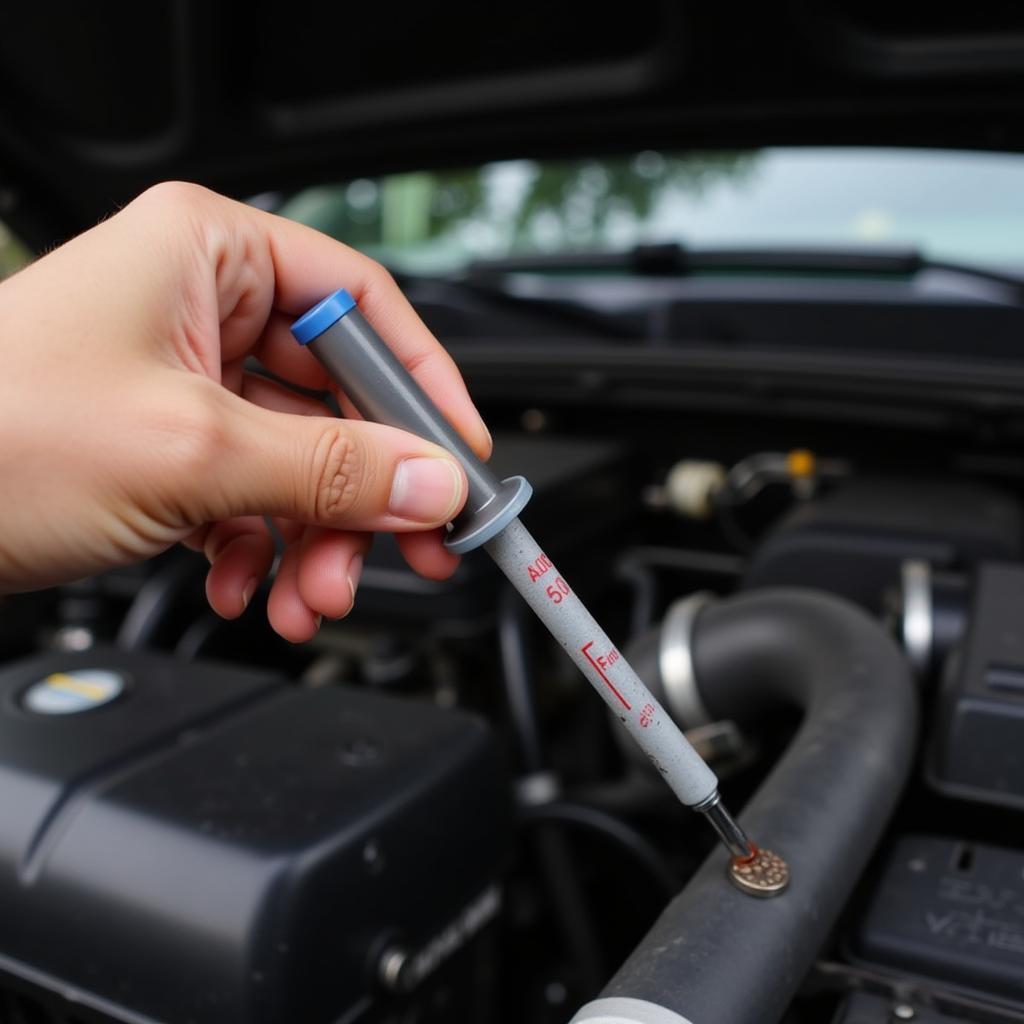Rust on the undercarriage of your car is a common problem, especially in areas with harsh winters or coastal regions. If left untreated, it can compromise the structural integrity of your vehicle. This comprehensive guide will walk you through how to fix a rusted bottom of car, from identifying the problem to implementing effective solutions, whether you’re a DIY enthusiast or prefer professional help.
Addressing rust early is crucial to preventing further damage and costly repairs. A rusty car bottom not only looks bad but can also be dangerous if left unchecked. This issue can weaken critical components, affecting handling and safety. Therefore, understanding the causes and solutions is essential for any car owner.
Similar to fix rust on car, rust on the undercarriage is often caused by prolonged exposure to moisture, road salt, and other environmental factors. The first step in fixing a rusted car bottom is to assess the extent of the damage. A thorough inspection will reveal the severity of the rust and help you determine the appropriate course of action.
Identifying the Extent of Rust Damage
Before you start, thoroughly clean the undercarriage with a pressure washer to remove dirt, grime, and loose rust. This will give you a clear view of the affected areas. Inspect the frame rails, floor pans, crossmembers, and any other metal components for signs of rust. Look for bubbling paint, flaking metal, and holes.
- Surface Rust: This is the initial stage of rust and appears as a reddish-brown discoloration on the metal surface.
- Scale Rust: As rust progresses, it forms flakes or scales that can be easily chipped away.
- Penetrating Rust: This is the most severe type of rust, where the metal has been eaten away, creating holes and weakening the structure.
DIY Rust Repair for Your Car’s Undercarriage
If the rust is minimal (surface rust or light scale rust), you can tackle the repair yourself. This involves removing the rust, treating the affected area, and applying a protective coating.
- Remove the Rust: Use a wire brush, sandpaper, or a sanding disc to remove all traces of rust. For heavier rust, a grinder with a wire wheel attachment may be necessary. Wear appropriate safety gear like gloves and eye protection. This is a crucial step in ensuring the new coating adheres properly.
- Treat the Affected Area: After removing the rust, apply a rust converter to the bare metal. This chemical solution converts the rust into a stable compound that prevents further corrosion.
- Apply a Protective Coating: Once the rust converter has dried, apply a primer followed by a rust-resistant paint. This will protect the metal from future rust formation. Consider undercoating to add an extra layer of protection, particularly in harsh climates.
When to Seek Professional Help
For more extensive rust damage, especially penetrating rust, it’s best to consult a professional auto body repair shop. They have the expertise and equipment to handle complex repairs, including welding in new metal patches. This process can be quite involved, including cutting out the rusted sections and welding in new pieces. For significant rust damage, similar to how to fix large rust holes in car, professional intervention is necessary.
Preventing Future Rust
Prevention is key when it comes to rust. Regular cleaning of the undercarriage, especially after driving in winter conditions, can significantly reduce the risk of rust formation. Applying a rust inhibitor or undercoating can provide additional protection. Just like you might fix rust car door, proactive measures can save you time and money down the road.
“Regular undercarriage washes are your first line of defense against rust,” advises John Smith, a certified automotive technician with over 20 years of experience. “It’s a simple step that can prevent costly repairs in the long run.”
 Washing a Car Undercarriage
Washing a Car Undercarriage
Conclusion
Knowing How To Fix Rusted Bottom Of Car is essential for maintaining your vehicle’s longevity and safety. Whether you choose to tackle minor rust repairs yourself or seek professional assistance for more extensive damage, addressing the issue promptly is crucial. By understanding the causes of rust and implementing preventative measures, you can keep your car’s undercarriage in top condition for years to come. For further assistance or personalized advice on your specific rust issue, feel free to connect with us at Autotippro.
“Addressing rust early can prevent it from becoming a major structural problem,” adds Maria Garcia, a leading automotive engineer specializing in corrosion prevention. “Don’t ignore those early signs of rust!”
AutoTipPro Contact Information:
Phone: +1 (641) 206-8880
Office: 500 N St Mary’s St, San Antonio, TX 78205, United States
 Applying Rust Inhibitor to Car Undercarriage
Applying Rust Inhibitor to Car Undercarriage
Fixing a big hole in the bottom of your car can be tricky. For additional information on fixing large holes, refer to our guide on fix a big hole bottom of car. This guide offers in-depth advice on dealing with extensive rust damage. Similar to fixing car rust with fiberglass, understanding the different repair methods is essential.
FAQ
- What causes rust on the bottom of a car? Exposure to moisture, road salt, and other environmental factors.
- Can I fix rust on my car’s bottom myself? Minor surface rust can be addressed with DIY methods.
- When should I take my car to a professional for rust repair? For penetrating rust or extensive damage, professional help is recommended.
- How can I prevent rust on my car’s undercarriage? Regular cleaning, rust inhibitors, and undercoating can help prevent rust.
- What is the best way to remove rust from my car’s bottom? Wire brushes, sandpaper, or grinders with wire wheel attachments are effective.
- What type of paint should I use for rust repair? Use a rust-resistant paint specifically designed for automotive applications.
- Is it safe to drive with a rusted car bottom? Extensive rust can compromise structural integrity and safety; get it inspected promptly.






Leave a Reply